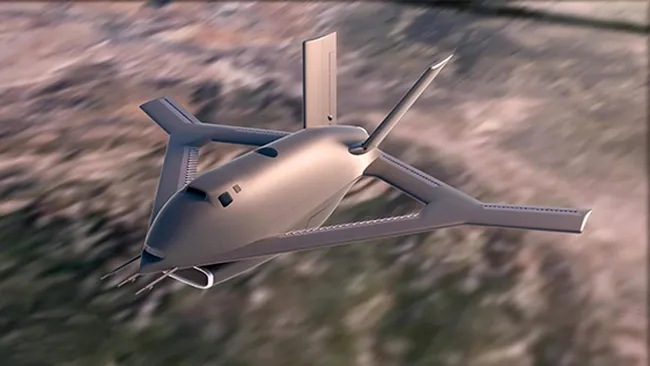In a groundbreaking move, the US Defense Advanced Research Projects Agency (DARPA) recently greenlit the construction of the X-65 Aircraft, incorporating air-jet flight controls, a cutting-edge technology set to replace traditional control surfaces with Active Flow Control (AFC) actuators utilizing jets of air for precise maneuvering. Awarded to Aurora Flight Sciences, a Boeing company, this venture could mark a pivotal shift in aviation technology.
Table of Contents
The Evolution of Aircraft Flight Control Systems
As passengers, we often witness the intricate dance of control surfaces on a plane’s wings, orchestrated by a sophisticated flight control system. Dating back to the Wright Brothers’ first powered flight in 1903, the control system has evolved significantly. Initially operated mechanically, advancements led to electric signaling, fly-by-wire technology, and the introduction of artificial feel devices to enhance pilot control.
Recent Research Approaches to Flight Control Systems
Modern research explores innovative approaches to integrate flight control functions into wings. “Adaptive compliant wings” or “morphing aerofoils” utilize elastic materials to enable flexible wings, enhancing aerodynamic efficiency. Another approach involves fluidics, replacing large mechanical parts with smaller fluid slots emitting controlled air flows. This active flow control promises simplicity, reduced costs, and improved aerodynamic performance.
| Aspect | Details |
|---|---|
| Aircraft Model | X-65 |
| Technology | Air-Jet Flight Control (Active Flow Control) |
| Contractor | Aurora Flight Sciences (Boeing Company) |
| Program Name | Control of Revolutionary Aircraft with Novel Effectors (CRANE) |
| Wingspan | 30 feet (9 meters) |
| Weight | 7,000 pounds (3,200 kg) |
| Flight Speed | Up to Mach 0.7 |
| AFC System Components | 14 Banks of AFC Actuators with Independently Controllable Channels |
| Expected Roll-Out | Early 2025 |
| First Flight Date | Mid-2025 |
| Key Features | Diamond-shaped wings, AFC technology, Potential replacement of traditional control surfaces |
| Potential Applications | Military and Civil Aircraft, Stealth Enhancement, Future Integration into Airliners |
| Global Research Contribution | BAE Systems’ Flap-Free Flight Technology, India’s Fluid Dynamics Research |
| Innovative Approaches | Adaptive Compliant Wings, Fluidics (Active Flow Control) |
| Expected Industry Impact | Weight Reduction, Improved Aerodynamic Efficiency, Enhanced Stealth Capabilities |
| Anticipated Future Integration | Fighter Planes, Potential Integration into Airliners (6-8 years) |
The DARPA AFC Project: Shaping the Future
DARPA, in collaboration with Boeing’s subsidiary Aurora Flight Sciences, is spearheading the Control of Revolutionary Aircraft with Novel Effectors (CRANE) program. This initiative aims to develop an aircraft controlled entirely by jets of pressurized air, eliminating external moving parts. The AFC technology alters the aerodynamic flow field, simplifying mechanical complexities, creating space for additional systems, and enhancing stealth capabilities.
AFC Nozzle Layout and X-65 Development
The X-65 Aircraft, under the CRANE program, is a significant step toward revolutionizing flight control. Equipped with 14 AFC banks and independently controllable air supply channels, the X-65 Aircraft diamond-shaped wings promise enhanced strength and efficiency. The AFC system, using an array of nozzles, can alter the aircraft’s roll, pitch, and yaw, potentially replacing traditional, heavier control surfaces.
BAE Systems’ Contribution to AFC Research
BAE Systems has contributed to AFC research, successfully testing flap-free flight technology aimed at enhancing military capabilities. Wind tunnel testing of a 3D printed titanium model validated the technology’s aerodynamic characteristics, paving the way for cost-effective, lightweight, and high-performance flow control technologies.
Game-Changing Innovations: Redefining X-65 Aircraft Design
TheX-65 Aircraft challenges a century-old design paradigm for flight controls by introducing a method devoid of external moving parts. This innovation promises a substantial reduction in weight, volume, and significant contributions to stealth capabilities. While still in the experimental stage, the potential impact on both military and civil aircraft is monumental, with applications foreseen in fighter planes and potential integration into airliners within 6-8 years.
Global Perspectives: India’s Role in Fluid Dynamics Research
In India, institutions like the National Aeronautical Laboratory (NAL), the Indian Institute of Science (IISc), and various IITs are actively engaged in fluid dynamics research. Prof. Satish Dhawan, a pioneer in the field, played a crucial role in advancing experimental fluid dynamics in India. The recent unveiling of cutting-edge wind tunnel facilities reflects India’s commitment to technological advancements, aligning with the global pursuit of aerospace innovation.
Conclusion: A Future Soaring on Air-Jet Wings
As we witness the unfolding of the X-65 Aircraft project and its potential impact on aviation, the future of flight control systems appears poised for a transformative leap. The fusion of AFC technology, BAE Systems’ innovations, and global research efforts signals a paradigm shift in aircraft design and performance. With the X-65 Aircraft at the forefront, we anticipate a future where air-jet wings redefine the skies, making airframes lighter, sturdier, and paving the way for a new era in aviation.
